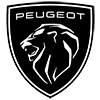 2012 Peugeot 301 Dimensions, Size & Specs
2012 Peugeot 301 Dimensions, Size & SpecsMeasurements of the 2012 Peugeot 301, engineered for optimal performance and comfort
| Dimensions | |
|---|---|
| Length: | 4442 mm174.9 in14.6 ft |
| Width: | 1748 mm68.8 in5.7 ft |
| Height: | 1466 mm57.7 in4.8 ft |
| Trunk Capacity: | 506 liter17.9 cu ft |
| Trunk Capacity (Max): | 1332 liter47.0 cu ft |
| Weight Specifications | |
| Curb Weight: | 980-1090 kg2161-2403 lbs |
| Maximal permitted Weight: | 1459-1559 kg3217-3437 lbs |
The Peugeot 301 sedan, produced from 2012 to 2017, represents a practical compact sedan designed for efficiency and comfort. Measuring 4442 mm (175 inches) in length, 1748 mm (68.8 inches) in width, and 1466 mm (57.7 inches) in height, this model strikes an optimal balance between urban maneuverability and interior spaciousness. The vehicle's curb weight ranges between 980 and 1090 kg (2160 to 2403 lbs), reflecting its lightweight construction that contributes to fuel efficiency and agility, while its maximum permissible weight is between 1459 and 1559 kg (3217 to 3438 lbs). Luggage capacity is another key highlight of the Peugeot 301, offering 506 liters (17.9 cubic feet) of storage space in the trunk, which expands substantially to 1332 liters (47 cubic feet) with the rear seats folded down — ideal for accommodating larger cargo or luggage for longer trips. Overall, the Peugeot 301 sedan caters well to drivers seeking a compact yet roomy vehicle with practical cargo capacity, suitable for both daily commuting and extended travel.
Discover the standout features that make the 2012 Peugeot 301 a leader in its class
Have a question? Please check our knowledgebase first.
The Peugeot 301, produced from 2012 to 2017, measures 4442 mm (175 inches) in length, 1748 mm (68.8 inches) in width, and 1466 mm (57.7 inches) in height. These dimensions place the 301 comfortably in the compact sedan segment, offering a practical balance between interior space and external footprint suitable for urban and highway driving.
The Peugeot 301's curb weight ranges from 980 kg to 1090 kg (2161 lbs to 2403 lbs), depending on the specific model and configuration. Its maximum weight capacity lies between 1459 kg and 1559 kg (3217 lbs to 3437 lbs), accommodating passengers and cargo within safe limits. This weight profile contributes to the car's relatively fuel-efficient performance and nimble handling.
The Peugeot 301 offers a luggage capacity of 506 liters (17.9 cubic feet) with the rear seats up, providing ample space for daily shopping or moderate travel gear. When the rear seats are folded down, the cargo volume expands dramatically to 1332 liters (47 cubic feet). This versatility makes the 301 suitable for transporting larger items or extra luggage on longer trips.
Yes, the Peugeot 301 fits comfortably into a standard garage. Most standard residential garages are about 2400 to 3000 mm (94.5 to 118 inches) wide and approximately 5400 to 6000 mm (213 to 236 inches) deep, dimensions well above the 301's width of 1748 mm (68.8 inches) and length of 4442 mm (175 inches). Its moderate height of 1466 mm (57.7 inches) ensures ample vertical clearance for most garage door heights.
The Peugeot 301 introduced in 2012 was essentially a new model without a direct predecessor named '301' in Peugeot's recent history—commonly positioned as a successor to the older Peugeot 306 and 307 in markets needing affordable sedans. Compared to those models, the 301 featured a slightly longer length and increased luggage space aimed at emerging markets. Its design focused more on practicality, offering larger boot space (506 liters), which improved upon the smaller trunks in its comparable predecessors.
In comparison to similar compact sedans like the Toyota Corolla or Ford Focus of the same era, the Peugeot 301 stands out with its generous luggage capacity of 506 liters, which is generally larger than many competitors that average around 400-450 liters. Its length and width are comparable but often slightly more compact, which adds to easier maneuverability in urban environments. The 301's balance of interior space, moderate curb weight, and efficient design makes it an attractive option for buyers looking for practical sedans with good fuel efficiency and space utility.
The Peugeot 301 is designed as a four-door sedan with seating capacity for five passengers—two in the front and three in the rear. While exact interior dimensions like legroom and headroom vary slightly by trim, the car provides comfortable space for adults in both front and rear seats, supported by its exterior dimensions that maximize cabin volume. Its interior layout aims at practicality and comfort for daily commuting and family use.
Throughout its production from 2012 to 2017, the Peugeot 301 was offered with different engine options depending on the market. Most common were small displacement petrol engines (1.2L and 1.6L) and diesel variants such as a 1.6L HDi engine. These choices provided a balance between fuel efficiency and adequate performance for city and highway driving. Engine outputs typically ranged from around 72 hp to about 115 hp, catering to a broad spectrum of drivers prioritizing economy and reliability.
The Peugeot 301 typically features a ground clearance around 165 mm (6.5 inches), which is sufficient for most urban and light rural roads, offering protection against minor road obstacles and speed bumps. Its compact dimensions promote a tight turning radius, estimated roughly at 10.5 meters (34.4 feet), making parking and maneuvering the sedan in tight spots relatively easy, an advantage especially appreciated in city driving scenarios.
The Peugeot 301, with its lightweight design (curb weight as low as 980 kg or 2161 lbs) and efficient small displacement engines, was known for respectable fuel economy. Depending on the engine and transmission, it averaged between approximately 4.5 to 6.0 liters per 100 km (52 to 39 mpg US). Compared to competitors like the Toyota Corolla and Honda Civic of the same era, the 301’s fuel efficiency was competitive, particularly in diesel variants, making it an economical choice for buyers conscious of running costs amid rising fuel prices.
Discover similar sized cars.
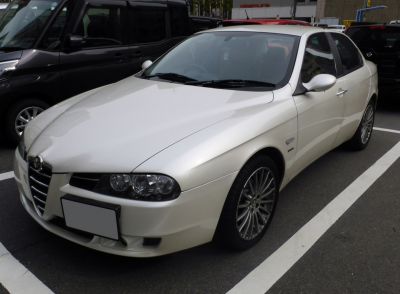
| Production: | 2003-2006 |
|---|---|
| Model Year: | 2003 |
| Length: | 4435 mm174.6 in |
| Width: | 1745 mm68.7 in |
| Height: | 1430 mm56.3 in |

| Production: | 1998-2005 |
|---|---|
| Model Year: | 1998 |
| Length: | 4400 mm173.2 in |
| Width: | 1720 mm67.7 in |
| Height: | 1410 mm55.5 in |
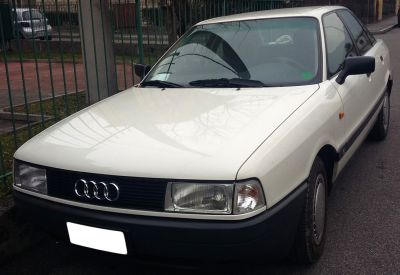
| Production: | 1986-1991 |
|---|---|
| Model Year: | 1986 |
| Length: | 4393 mm173.0 in |
| Width: | 1695 mm66.7 in |
| Height: | 1397 mm55.0 in |
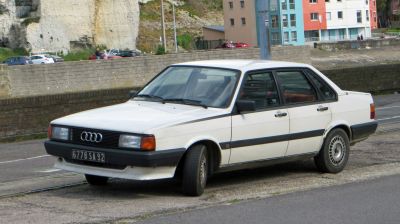
| Production: | 1984-1987 |
|---|---|
| Model Year: | 1984 |
| Length: | 4406 mm173.5 in |
| Width: | 1682-1695 mm66.2-66.7 in |
| Height: | 1345-1397 mm53.0-55.0 in |
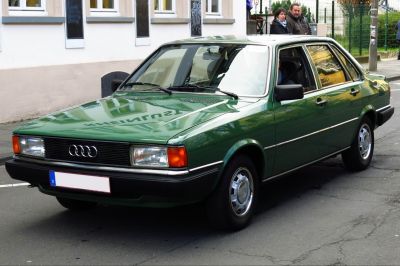
| Production: | 1978-1984 |
|---|---|
| Model Year: | 1978 |
| Length: | 4383-4390 mm172.6-172.8 in |
| Width: | 1682 mm66.2 in |
| Height: | 1355-1376 mm53.3-54.2 in |
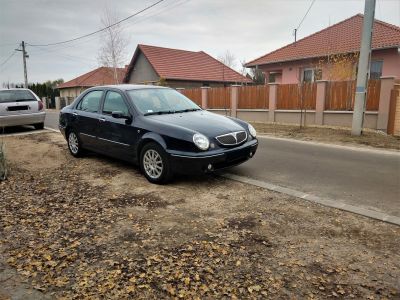
| Production: | 1999-2005 |
|---|---|
| Model Year: | 1999 |
| Length: | 4466 mm175.8 in |
| Width: | 1743 mm68.6 in |
| Height: | 1462 mm57.6 in |
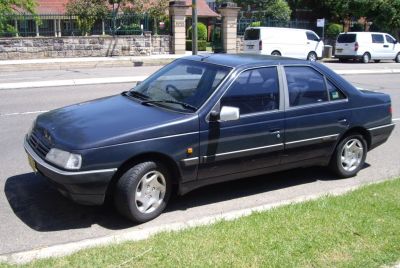
| Production: | 1992-1996 |
|---|---|
| Model Year: | 1992 |
| Length: | 4408 mm173.5 in |
| Width: | 1694-1714 mm66.7-67.5 in |
| Height: | 1390-1406 mm54.7-55.4 in |
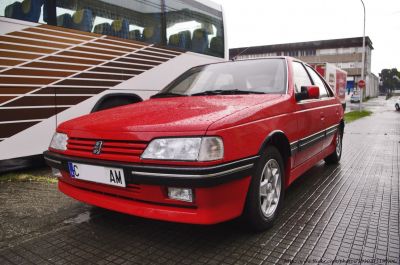
| Production: | 1987-1994 |
|---|---|
| Model Year: | 1987 |
| Length: | 4408 mm173.5 in |
| Width: | 1714 mm67.5 in |
| Height: | 1406 mm55.4 in |
